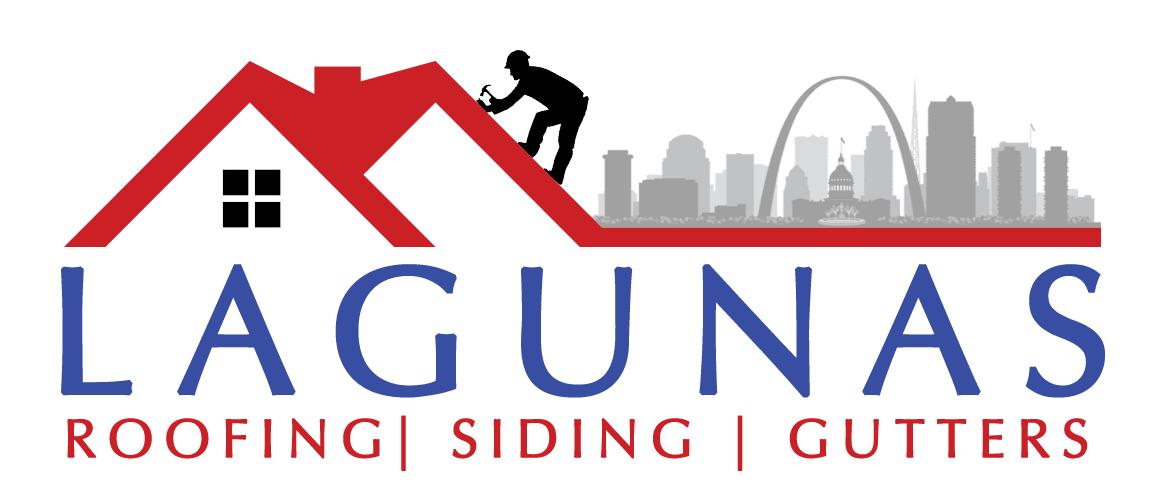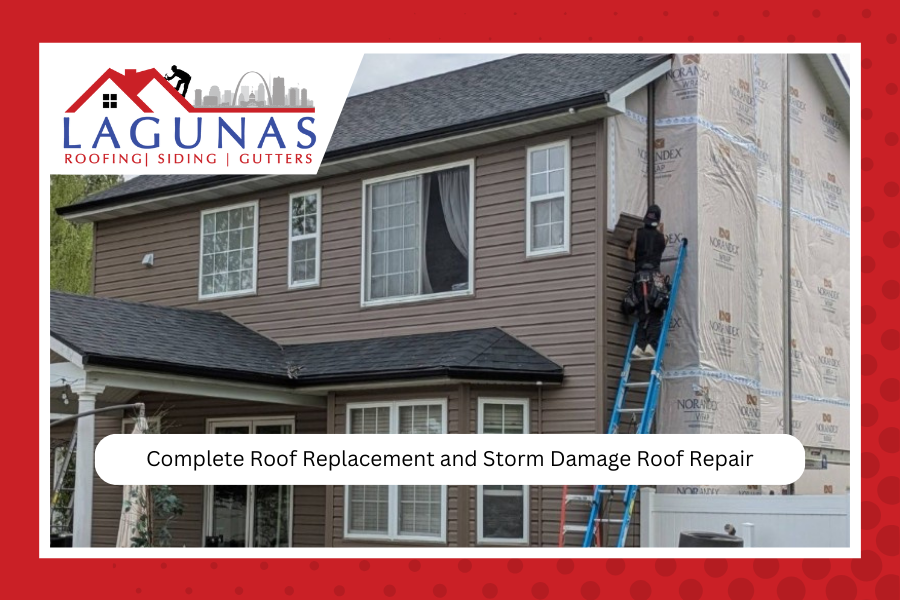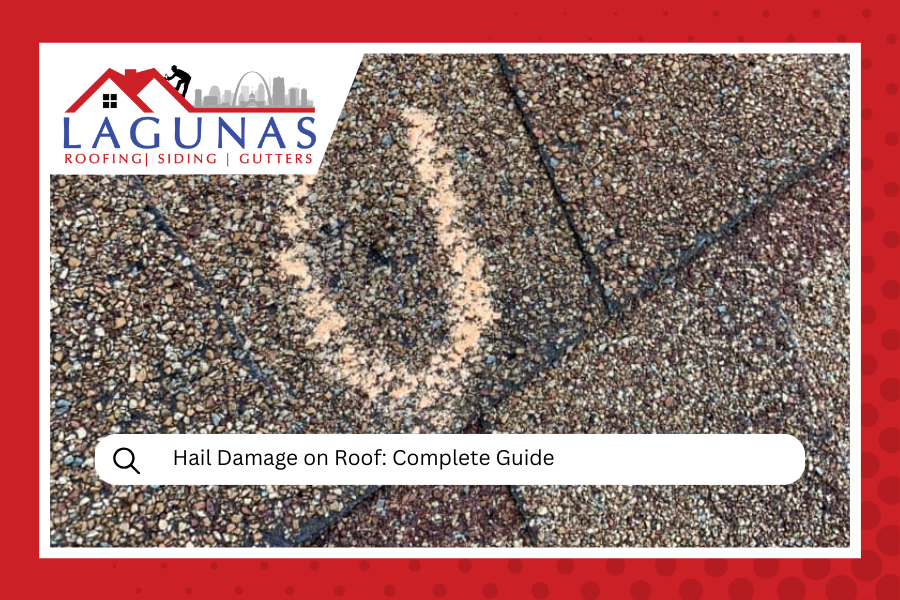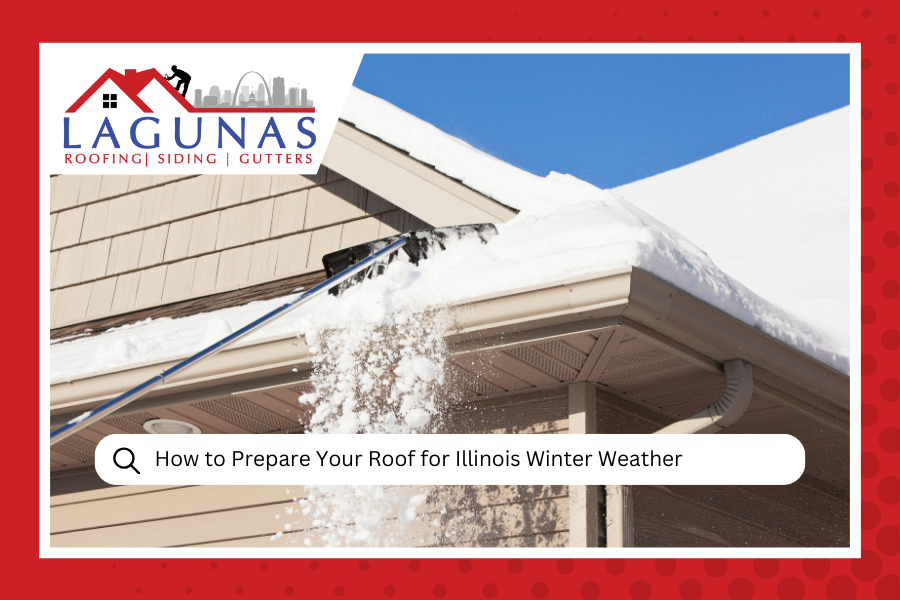
How to Prepare Your Roof for Illinois Winter Weather
Jump To:
- Why Illinois Winter Weather is Tough on Roofs
- Essential Fall Roof Inspection Checklist
- Gutter Maintenance: Your First Line of Defense
- Preventing Ice Dams Before They Start
- When to Call the Professionals
- Snow Load Considerations for Illinois Homes
- Final Thoughts: An Ounce of Prevention
- Frequently Asked Questions
Winter in Illinois doesn't mess around. One day you're raking leaves, and the next you're scraping ice off your windshield wondering where fall went. While we can't control Mother Nature's mood swings, we can definitely prepare our roofs for whatever she throws our way. At Lagunas Roofing, we've seen our fair share of winter roof disasters, and trust us, a little prep work now can save you from some serious headaches (and wallet aches) later.
If you're dealing with existing roof issues, don't wait until the first snowfall to address them. Our roof repair services can tackle problems before winter weather makes them worse.
Why Illinois Winter Weather is Tough on Roofs
Let's be honest, Illinois weather can be pretty unpredictable. We get freezing temperatures, heavy snow loads, ice storms that make everything look like a winter wonderland but wreak havoc on your roof, and those lovely freeze-thaw cycles that can turn tiny problems into big ones fast.
Your roof takes a beating from all this weather drama. Snow weight can stress your roof structure, ice dams can cause water backup and leaks, and those constant temperature swings cause materials to expand and contract, potentially creating gaps where water can sneak in.
Illinois Winter Temperature Impact on Roofing Materials
| Temperature Range | Material Impact | Risk Level |
|---|---|---|
| Above 45°F | Ideal for repairs | Low |
| 32°F - 45°F | Materials become stiff | Medium |
| Below 32°F | Shingles become brittle | High |
| Below 0°F | Extreme material stress | Very High |
Essential Fall Roof Inspection Checklist
Before winter sets in, give your roof a thorough once-over. Here's what to look for:
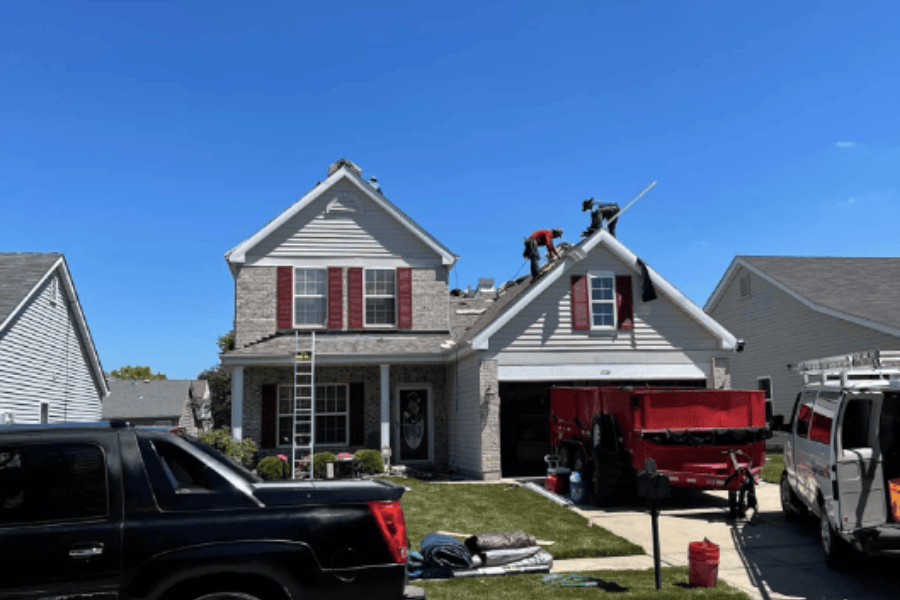
Professional roof inspections help identify potential winter weather vulnerabilities before they become major problems.
Exterior Inspection Points
- Shingles: Look for cracked, curled, or missing shingles
- Flashing: Check around chimneys, vents, and skylights for gaps or rust
- Gutters: Ensure they're securely attached and free of damage
- Roof edges: Inspect for loose or damaged drip edges
- Tree branches: Trim any hanging over your roof
Interior Warning Signs
- Water stains on ceilings or walls
- Musty odors in the attic
- Daylight visible through roof boards
- Sagging areas in the roof line
If you spot any of these issues, it might be time for a professional assessment. Sometimes what looks like a small problem from the ground is actually something more serious.
Gutter Maintenance: Your First Line of Defense
Clean gutters aren't just about curb appeal, they're crucial for preventing ice dams. When gutters are clogged with leaves and debris, water can't flow properly. Add freezing temperatures, and you've got a recipe for ice buildup that can damage both your gutters and roof.
Gutter Prep Steps:
- Remove all leaves, twigs, and debris
- Check for proper slope toward downspouts
- Secure any loose brackets or joints
- Consider installing gutter guards if you don't have them
Don't forget about your downspouts! Make sure water flows away from your foundation. Standing water around your home's base can freeze and cause foundation issues too.
Ready to get your roof winter-ready? Don't tackle it alone.
Our team at Lagunas Roofing has the experience and tools to properly assess and prepare your roof for Illinois winter weather.
Contact Us TodayPreventing Ice Dams Before They Start
Ice dams are probably the most common winter roof problem we see here in Illinois. They form when heat escapes through your roof, melting snow that then refreezes at the roof's edge where it's colder. This creates a dam that can force water back up under your shingles.
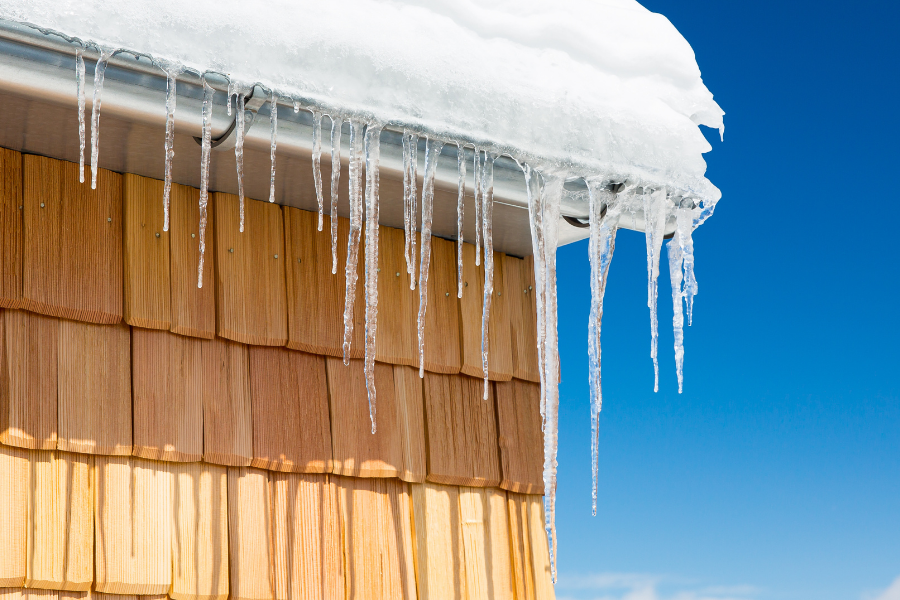
Ice dams form when melted snow refreezes at the roof's edge, creating a barrier that can force water back under shingles and into your home.
How Ice Dams Form: A Step-by-Step Process
Prevention strategies:
- Improve attic insulation: Keep warm air inside where it belongs
- Ensure proper ventilation: Ridge vents and soffit vents help maintain consistent roof temperature
- Seal air leaks: Check around light fixtures, fans, and attic hatches
- Consider heated roof cables: For problematic areas prone to ice buildup
When to Call the Professionals
Look, we're all for DIY projects, but roof work in preparation for winter isn't the time to channel your inner weekend warrior. Here's when you should definitely call in the pros:
- Any work involving getting on the roof (seriously, it's slippery up there)
- Structural concerns or sagging
- Structural concerns or sagging
- Multiple missing or damaged shingles
- Flashing repairs around chimneys or vents
- Anything involving electrical work for heating cables
Professional roofers have the right equipment, experience, and insurance to handle these jobs safely. Plus, we know what to look for that might not be obvious to untrained eyes.
Considering a roof replacement this fall? It's actually the perfect time to beat winter weather and save money during the off-peak season.
Learn About Roof ReplacementIf you're considering a roof replacement , fall is actually an ideal time. You'll beat the winter weather and potentially save money since it's not peak season for roofing work. Learn more about the best time to replace your roof and why fall timing works so well.
Snow Load Considerations for Illinois Homes
Illinois building codes require roofs to handle specific snow loads, but older homes or those with previous modifications might not meet current standards. Heavy, wet snow can weigh significantly more than the fluffy stuff, and ice adds even more weight.
Signs your roof might be stressed:
- Creaking or popping sounds
- Doors or windows that suddenly stick
- Cracks in drywall or plaster
- Sagging ceiling or roof lines
If you notice any of these signs during or after heavy snow, it's time to call a professional immediately. Snow removal might be necessary, but this should only be done by experienced professionals who know how to do it safely without damaging your roof.
For homes that have experienced storm damage in the past, extra vigilance is important since previous damage can make roofs more vulnerable to winter weather stress. If you're unsure about your roof's condition, check out our guide on how to identify roofing issues before winter arrives.
Final Thoughts: An Ounce of Prevention
Winter roof preparation isn't glamorous, but it's a whole lot cheaper than dealing with emergency repairs in January when it's 10 degrees outside. Taking care of small issues now prevents them from becoming big, expensive problems later.
Remember, your roof is your home's first line of defense against Illinois winter weather. A little attention now goes a long way toward keeping your family warm, dry, and comfortable all winter long. For more seasonal preparation tips, read our roofing tips for extreme weather conditions.
At Lagunas Roofing, we've been helping Illinois homeowners prepare for winter weather since 2021. We know the local climate challenges and have the experience to spot potential problems before they become disasters. Don't wait until the first snow to discover your roof isn't ready for winter. We serve homeowners throughout the Fairview Heights area and greater St. Louis region.
For reliable winter preparation advice, check out the National Weather Service's winter weather safety guide for additional seasonal safety tips.
Frequently Asked Questions
What's the ideal temperature range for completing roof repairs before winter in Illinois?
Most roofing materials should be installed when temperatures are consistently above 45°F. Asphalt shingles become brittle in cold weather and can crack during installation. Plan your repairs for October when daytime temperatures are still moderate, giving materials time to properly seal before winter weather hits.
How much snow load can my Illinois roof handle safely?
Illinois building codes require roofs to support at least 25 pounds per square foot of snow load, but this varies by location and roof design. Fresh powder snow weighs about 5-10 pounds per cubic foot, while wet, heavy snow can weigh 15-20 pounds per cubic foot. Ice adds significantly more weight. If you have more than 2 feet of snow accumulation, consider professional removal.
Should I turn off my gutters' heating cables during mild winter days?
No, keep heating cables running consistently throughout winter. Turning them on and off can actually increase ice dam formation because partial melting and refreezing creates more problems than consistent temperature maintenance. Modern cables have built-in thermostats that regulate operation automatically.
Is it normal for my roof to make creaking sounds during Illinois winter weather?
Some settling sounds are normal as materials contract in cold weather, but consistent creaking, especially during snow loading, can indicate structural stress. Pay attention to timing, sounds that occur only when adding or removing snow load need professional evaluation. Sudden, loud pops or cracks always warrant immediate inspection.
Ready to ensure your roof is prepared for whatever Illinois winter throws your way? Contact Lagunas Roofing at (618) 300-5661 or visit our website to schedule your pre-winter roof inspection. Serving the Fairview Heights area and greater St. Louis region with reliable, professional roofing services.
